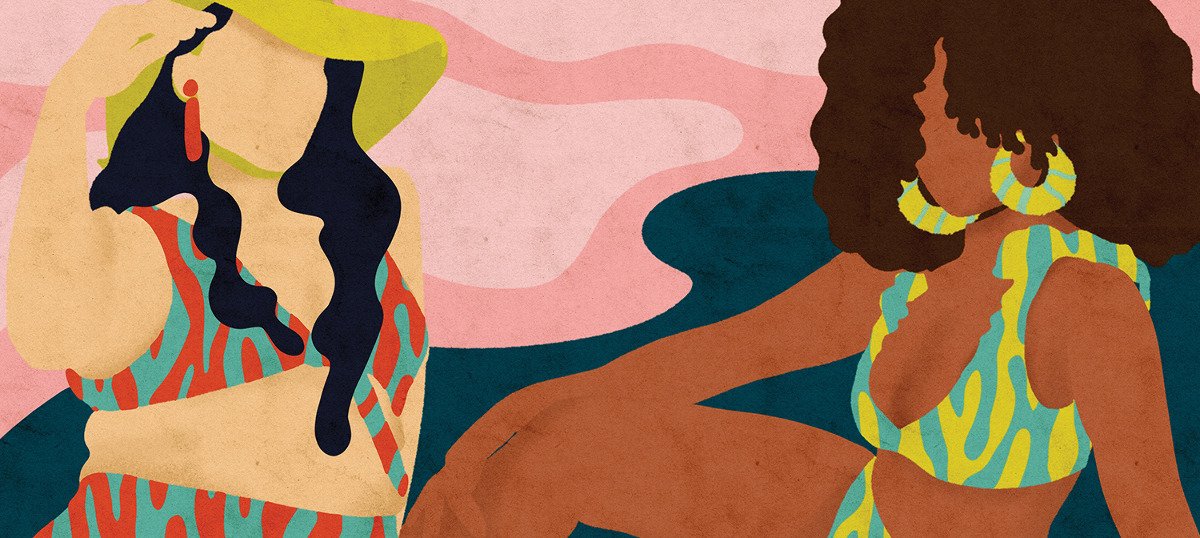
If Brandy Melville Went Out of Business… Let’s Just Say I Wouldn’t Be Mad About It
Change can be good, if not necessary at times.
Over the past couple of decades, the discourse on body image and body standards has shifted significantly. In the 2000s, being skinny was all the rage and diet culture had taken over, and this created such a toxic environment for individuals to just exist in. I remember watching movies and tv shows and seeing celebrities during this time, and there was a certain body type being forced onto society. I’m definitely not saying that there’s been a complete 180 from that mindset because fatphobia is so deeply rooted into our society. However, I have witnessed how we have been moving into a more body inclusive space, and it brings me such joy to say that. I feel seen. Whether it be on social media, in movies/tv shows, on the runway, or a brand’s website, I see so many more different body types being represented. This is how it should be. This is how the world actually looks like. All this being said, there is one brand that is light years behind this movement: Brandy Melville. And it absolutely infuriates me.
Brandy Melville opened its first store in the United States in 2009. It has been over ten years, and they still follow their one size only policy. Take a wild guess what sizes they offer. Yep, extra small and small. That’s it. Talk about exclusivity. I completely understand when a brand wants to create this aura of exclusivity because they want that demand from consumers. However, it is never right to exclude someone based on fundamental aspects of their identity. It absolutely blows my mind that they haven’t expanded their size range. Would it really be so bad to be more inclusive? To allow more people to wear your clothes and participate in your brand? Clothes are supposed to fit people, not the other way around. It is just such a blatant message that they don’t care about body inclusivity. Now more than ever, it should be a company’s responsibility to promote positivity in regards to body image because the toxicity Brandy Melville promotes leaves a lot of young people feeling like they are not good enough or they are doing something wrong. Looking at other brands, it is clear that change is always possible and being body inclusive equals success. Let’s take a look at Abercrombie, shall we?
In a class I took called “Supervision and Management”, we did a case study on Abercrombie, where we took a deeper look into their company in the early 2000s and how they have changed. The beginning of Abercrombie reminds me of the toxicity I mentioned above, but ten times worse. I mean there have even been documentaries made about Abercrombie because it was just that traumatizing for people. Michael Jeffries, the CEO then, had a vision for the company, and this vision was racist fatphobic. Firstly, A&F did not offer the sizes extra-large or double extra-large in their clothing, but this lack of range in sizes only existed in the women’s apparel section, not in menswear. In the United States, the average women’s pant size is 12 to 14. Therefore, a woman who is average or plus sized did not fit the niche market of A&F that is “cool or good-looking”. The tiny box that Jeffries created for A&F’s target market also applied to the employees working in stores, and there were very strict rules about hair color, style, and makeup. Through ad campaigns and brand images, A&F was very clearly putting out into the world that people who wear Abercrombie must be white, skinny, and blonde, and if a person does not happen to fit into this mold, then this brand is not for them and they are not cool or good looking. It is despicable to make people feel like they are not enough for just existing as they are.
That being said, Abercrombie did do a complete 180 when it came to their branding and what they offered. In 2017, Fran Horowitz was named CEO. On the website, there is so much diversity in the models whether it comes to race or body type, and the size range is from XXS to XXL. They have a new Curve Love collection that caters more towards curvy and plus sized women. And it works. Abercrombie is one of the most popular brands right now, it is all over my TikTok because people are raving about their jeans, the quality of their products, and their inclusivity. Take a look at some other brands, for example, Aerie. Their whole brand message is that it is real and the pictures are untouched, and there is so much diversity among models. They are a brand for every kind of person, and that kind of inclusivity and positivity sells. Even Victoria’s Secret, who had their own share of promoting toxicity and fatphobia, has taken an initiative to be more inclusive because they see how well their competitor, Aerie, is performing.
So, what’s the hold up Brandy Melville? It is not just about having positive intentions, but also the brand is just stagnant. Nothing innovative or exciting has come from them in years, and a rebrand that focuses on inclusivity could completely shake up the brand in a positive direction. But if not, I wouldn’t be surprised if they slowly faded into obsolescence… and I wouldn’t be mad about it.


